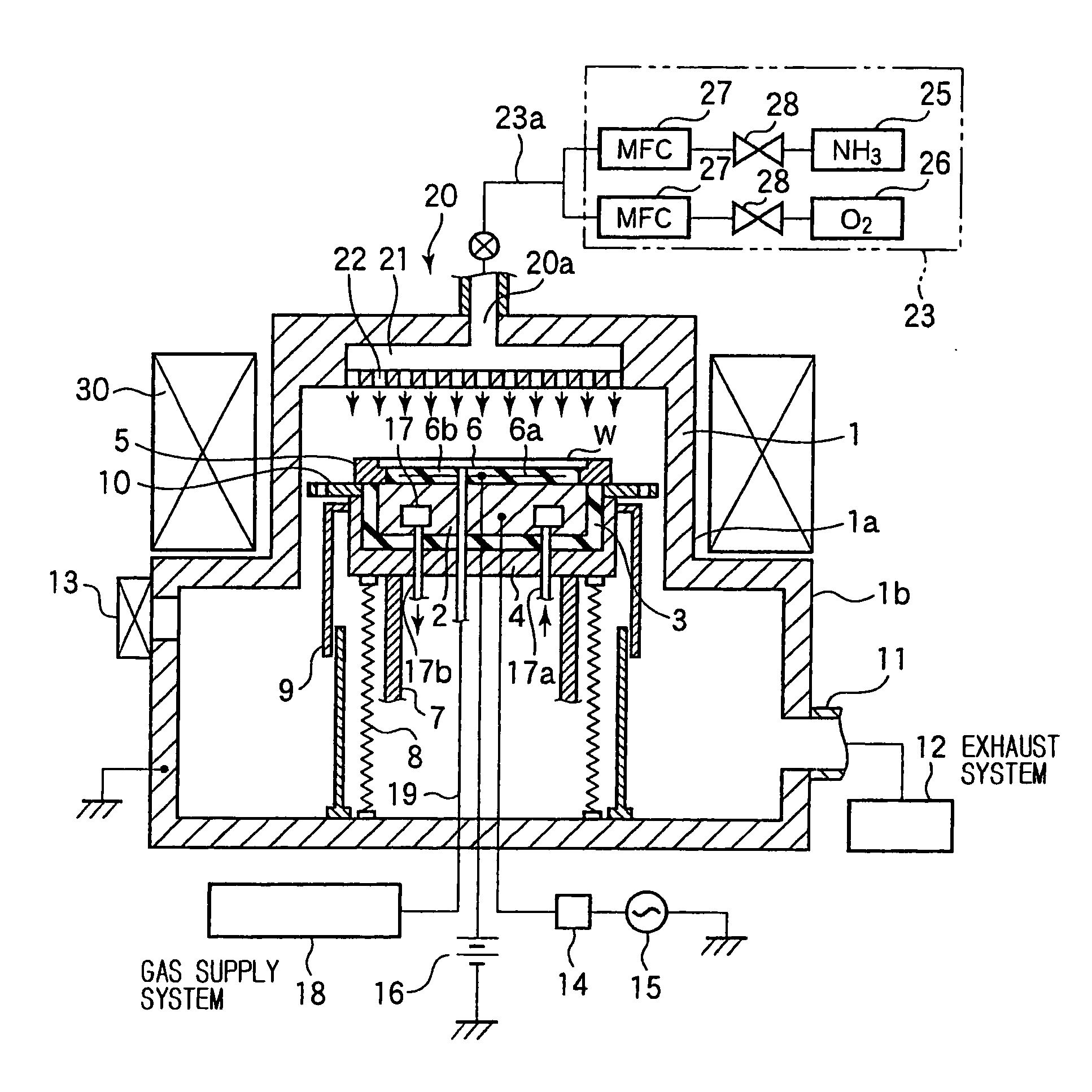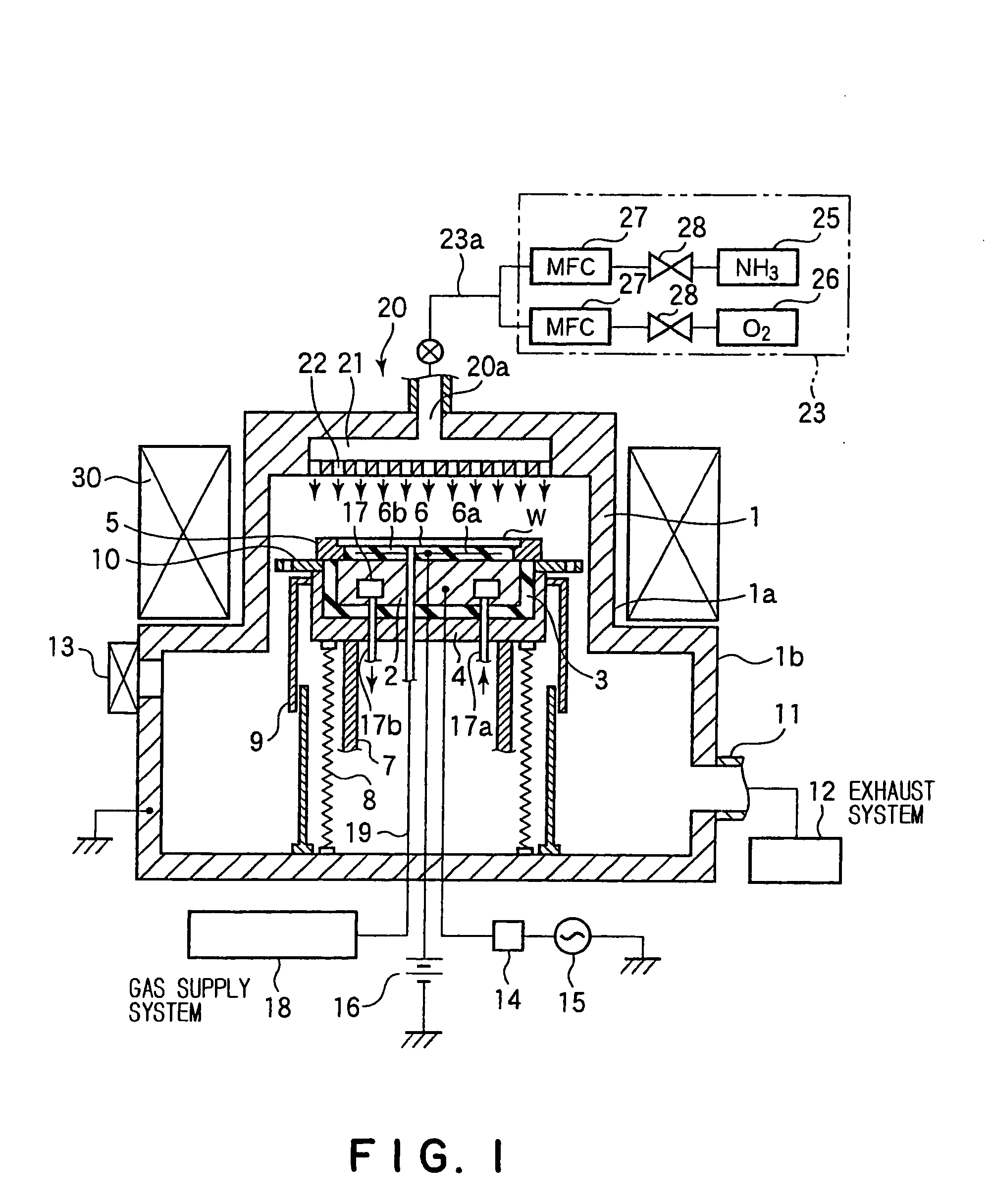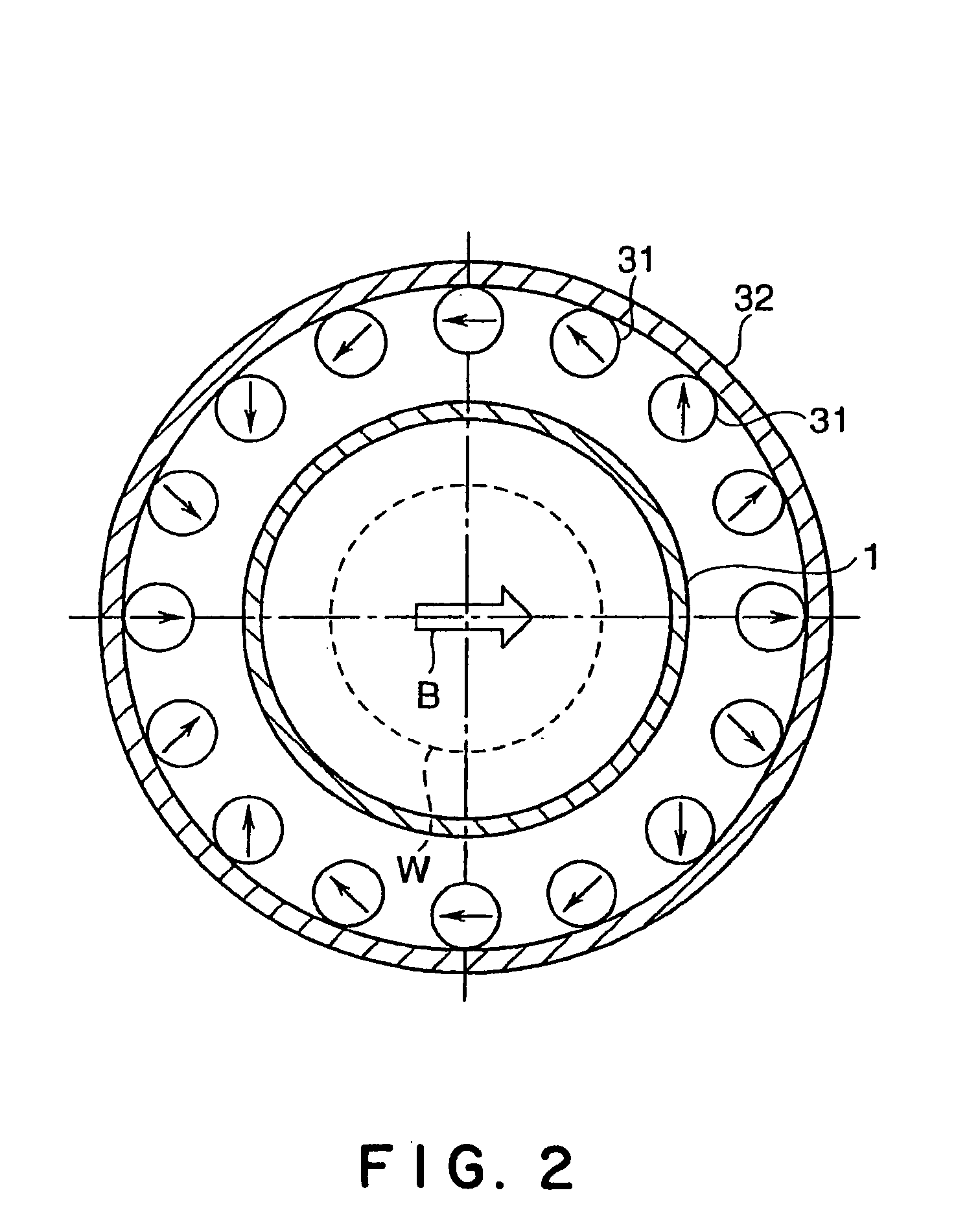Etching method
a technology of etching method and resist film, which is applied in the direction of basic electric elements, semiconductor/solid-state device manufacturing, electric apparatus, etc., can solve the problem that the etching method cannot achieve a satisfactorily high etch rate of organic lower resist film, and the selectivity of the film to be etched relative to the resist film is not sufficient, etc. problem, to achieve the effect of high in-plane uniformity and high etch ra
- Summary
- Abstract
- Description
- Claims
- Application Information
AI Technical Summary
Benefits of technology
Problems solved by technology
Method used
Image
Examples
experiment 1
[0077] Experiment 1 [0078] NH3 gas flow rate: 0.25 I / min [0079] O2 gas flow rate: 0.025 I / min [0080] Pressure in processing vessel: 2.7 Pa [0081] Residence time: 4.9 msec
[0082] Experiment 2 [0083] NH3 gas flow rate: 0.35 I / min [0084] O2 gas flow rate: 0.035 I / min [0085] Pressure in processing vessel: 4.0 Pa [0086] Residence time: 5.2 msec.
experiment 3
[0087] Experiment 3 [0088] NH3 gas flow rate: 0.43 I / min [0089] O2 gas flow rate: 0.043 I / min [0090] Pressure in processing vessel: 5.4 Pa [0091] Residence time: 5.7 msec.
[0092] Experiment 4 [0093] NH3 gas flow rate: 0.10 I / min [0094] O2 gas flow rate: 0.010 I / min [0095] Pressure in processing vessel: 2.7 Pa [0096] Residence time: 12.2 msec
[0097] FIGS. 8(a) to 8(d) show the results of Experiments 1 to 4, respectively. In Experiments 1 to 3, residence times were as short as about 5 msec and hence the organic films were etched at high etch rates exceeding 300 nm / min in satisfactory in-plane uniformity. In Experiment 4, residence time was longer than 10 msec and hence the organic film was etched at a low etch rate of 253.2 nm / min and the etched organic film had a low in-plane uniformity. The organic film etched by Experiment 2, in which residence time was 5.2 msec, had the highest in-plane uniformity among those etched by Experiments 1 to 3.
[0098] Experiments were conducted to study...
experiment 2
[0102] Experiment 2
[0103] NH3 gas and O2 gas were supplied at 0.35 I / min and 0.045 I / min, respectively, the O2 gas concentration of the etching gas was 11.4% and residence time was 5.1 msec.
[0104] Experiment 3
[0105] NH3 gas and O2 gas were supplied at 0.25 I / min and 0.050 I / min, respectively, the O2 gas concentration of the etching gas was 16.7% and residence time was 6.7 msec.
[0106] Results of experiments were as follows.
[0107] Experiment 1 [0108] Etch rate: 352.7 nm / min [0109] In-plane uniformity: ±1.7 [0110] CD shift in dense pattern: −1 nm (center), 5 nm (edge) [0111] CD shift in sparse pattern: 14 nm (center), 19 nm (edge).
[0112] Experiment 2 [0113] Etch rate: 355.1 nm / min [0114] In-plane uniformity: ±1.3 [0115] CD shift in dense pattern: 3 nm (center), 6 nm (edge) [0116] CD shift in sparse pattern: 15 nm (center), 20 nm (edge).
[0117] Experiment 3 [0118] Etch rate: 350.9 nm / min [0119] In-plane uniformity: ±3.3 [0120] CD shift in dense pattern: 0 nm (center), 1 nm (edge) [...
PUM
 Login to View More
Login to View More Abstract
Description
Claims
Application Information
 Login to View More
Login to View More - R&D
- Intellectual Property
- Life Sciences
- Materials
- Tech Scout
- Unparalleled Data Quality
- Higher Quality Content
- 60% Fewer Hallucinations
Browse by: Latest US Patents, China's latest patents, Technical Efficacy Thesaurus, Application Domain, Technology Topic, Popular Technical Reports.
© 2025 PatSnap. All rights reserved.Legal|Privacy policy|Modern Slavery Act Transparency Statement|Sitemap|About US| Contact US: help@patsnap.com



